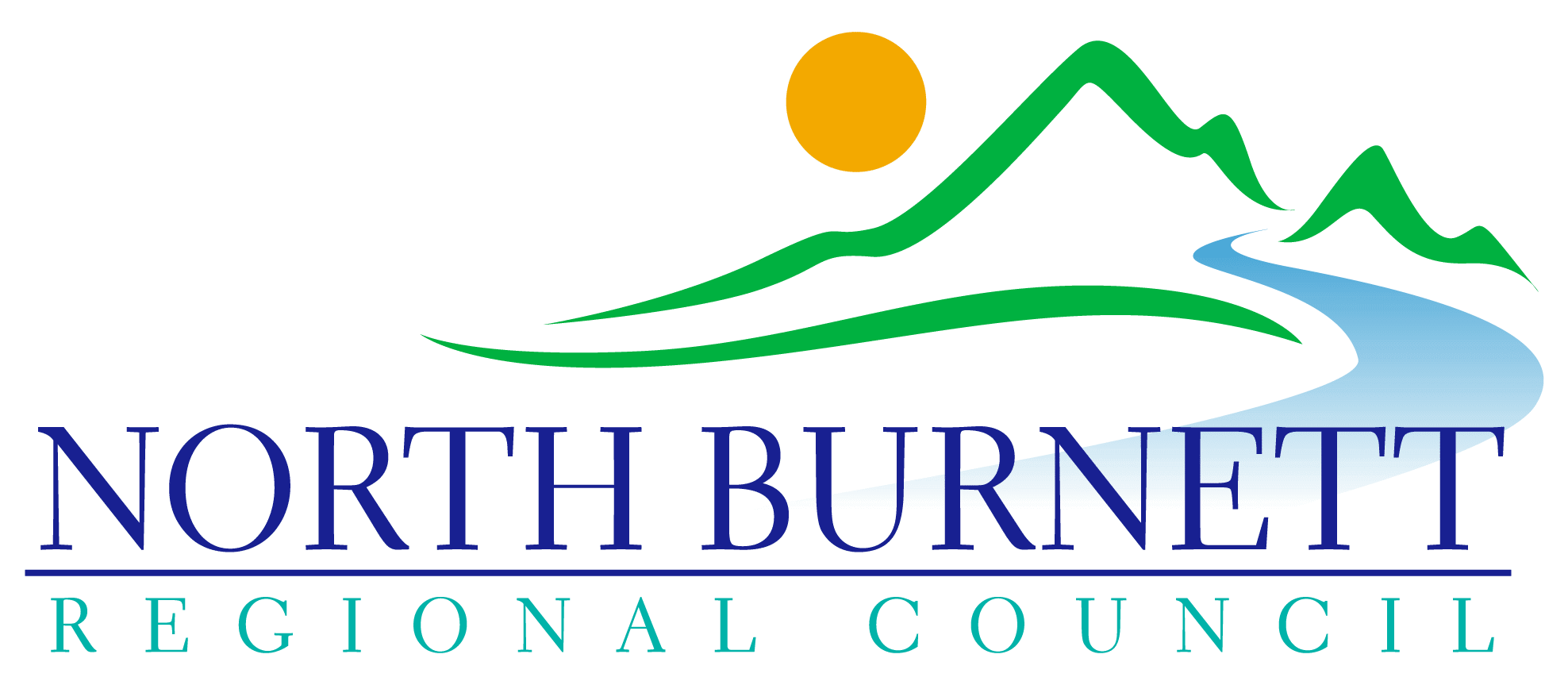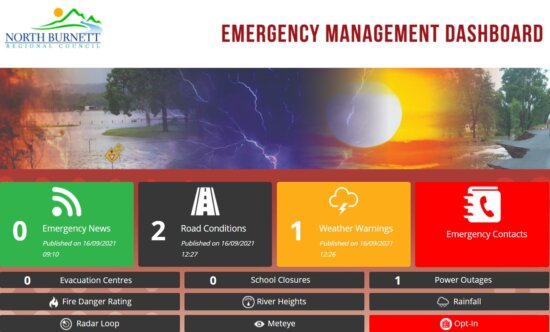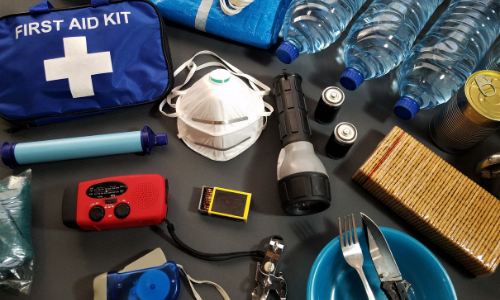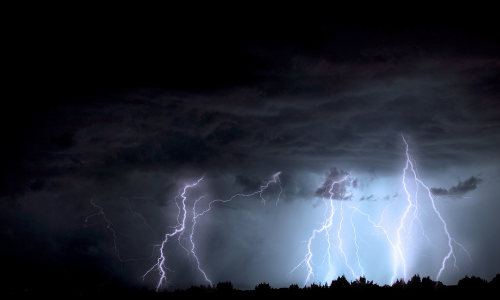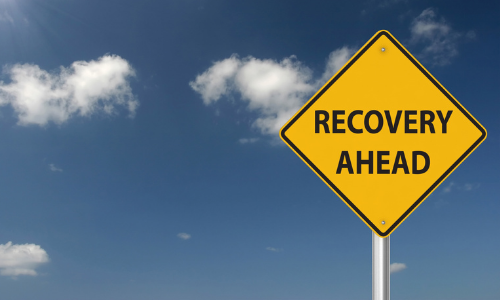Disaster Management

After a Disaster
Returning to normality after a disaster may be quick or difficult and prolonged.
Following an event, the Local Disaster Management Group will convene its Local Recovery and Resilience Sub Group to:
- ensure people’s wellbeing;
- rebuild essential infrastructure;
- help local economic recovery; and,
- rehabilitate the natural environment.
Recovering from a disaster is usually a gradual process. Safety is a primary issue, as are mental and physical well-being. If assistance is available, knowing how to access it makes the process faster and less stressful. This section offers some general advice on steps to take after disaster strikes in order to begin getting your home, your community and your life back to normal.
What to do after an event?
Venturing outside or returning home after a disaster has occurred can be both physically and mentally challenging. Knowing what you can expect to see and deal with may help you adjust to the aftermath.
Things you can expect following an event include:
- Debris – and lots of it;
- Possible damage to your home and/or contents;
- Possible fallen power lines;
- Road closures;
- Emergency services and response groups working to assess and repair damage and provide assistance to the community (based on priority of greatest need);
- Possible loss of power and telecommunications;
- Limited or no access to essential services, local businesses and supplies;
- If you have evacuated, it may be some time before Emergency Services declare it safe for you to return home; and,
- Displaced animals.
What to do after an event
After an event, it is essential to ensure the safety of yourself and your family before commencing clean-up or trying to assist others. Here are some tips for keeping you and your family safe:
- Do not venture outside until you have heard the official word that the cyclone has passed. The calm may just be the eye or the cyclone may turn and hit your area a second time.
- Continue to listen for weather warnings and advice. The cyclone may redevelop or change direction threatening your area again. Flooding is also likely. Officials will issue public safety notices on such things as contaminated water supplies.
- Check to see if neighbours, especially those with special needs, require assistance. Help injured or trapped neighbours. This will help relieve the strain on emergency services, who will be stretched to the limit. If the situation is life threatening, call ‘000’.
- Be wary of fallen power lines and notify Ergon Energy. Treat all power lines as live and keep your distance.
- Look for fire hazards, mainly broken or leaking gas lines and gas cylinders.
- If there is a sewage overflow on your property, notify the council.
- Take pictures of the damage to your home for evidence in insurance claims.
- If the power has been out for some time, perishable food may have started to go off. Throw out any food that came into contact with floodwater.
- Do not drink or prepare food with tap water until authorities have advised supplies are safe.
- Use the telephone only for emergency calls. Arrange to have one family member or friend outside of the impacted area call others to let them know of your situation. Demands on the telephone network for emergency calls will be high and parts of the system may be damaged.
- Do not use electrical appliances which have been wet until they are checked for safety.
- If your home has become uninhabitable due to cyclone damage, contact your local Council to identify where you can seek further assistance.
Where can I get Assistance?
Disasters are upsetting experiences for everyone involved. The emotional toll that disaster brings can sometimes be even more devastating than the financial strains of damage and loss of home, business or personal property.
Recognise that recovery takes time, and it is okay to ask for help.
Following a disaster, a range of welfare and support services will be made available to affected members of the community, which may include the following:
| Type of Assistance | Key Contacts |
|---|---|
| Assistance with minor damage repairs and/or clean-up – for members of the community, who have been impacted by the event. |
|
| Crisis counselling – to assist those experiencing issues with disaster-related stress. |
|
| Establishment of Recovery Centres – to provide easy access to essential information and a range of support services to help people affected by the event. |
This process is managed by the Department of Communities, who will advise the community as these centres are established. Visit the Queensland Government website for more information or to learn about their Self Recovery App for mobile devices. |
| Financial assistance – You may require assistance in submitting claims through your insurance provider or (if eligible) in applying for a personal hardship assistance payment through the State Government. | For more information visit the Queensland Government website. |
How Can I Help
If you have already checked in with your neighbours and still wish to help with the disaster recovery, there are several organisations you may contact to offer further assistance.
Donations
- GIVIT – GIVIT is a national not-for-profit organisation connecting those who have with those who need, in a private and safe way. GIVIT matches donation offers with identified requests from a storm, fire, flood or cyclone affected region, thereby eliminating the need for organisations to store and sort unexpected donations.
Volunteering
- Australian Red Cross – Australian Red Cross is a leading humanitarian aid and community service organisation, which is committed to supporting and empowering people and communities in times of vulnerability.
- Lions Club – Lions Australia is a volunteer organisation that contributes to disaster and emergency relief, medical research and community service.
- Rotary Club – Rotary is a worldwide organisation of business and professional leaders. This global network of volunteer leaders is dedicated to tackling the world’s most pressing humanitarian challenges across six (6) areas:
- promoting peace, preventing diseases,
- providing access to clean water and sanitation,
- enhancing maternal and child health,
- improving basic education and literacy; and,
- helping communities develop.
- Rural Fire Service – The Rural Fire Service (RFS) is a state-run volunteer organisation designed to help the Queensland community by undertaking fire prevention activities, responding to the outbreak of fires within the local community and assisting in times of disaster.
- State Emergency Service – The State Emergency Service (SES) is a state-run volunteer organisation designed to help the Queensland community in times of emergencies and disasters. Residents who wish to join the local SES Unit should contact the North Coast SES Volunteer Coordinator on 4122 0342.
Plans and Other Resources
Council is committed to educating staff and residents about these natural dangers and has developed a number of resources with various tips on preparing for disaster events. Included on this page are links to available resources from expert agencies, as well as information on what services we can provide to help you get “disaster ready”.
North Burnett Region Disaster Management Plan
The North Burnett Region Disaster Management Plan forms the basis and guidelines for the Prevention, Preparedness, Response and Recovery activities of the joint agencies within the North Burnett Region. The Plan is used when responding to a disaster that has impacted or has the potential to seriously impact upon the communities and infrastructure in the regional area.
Whilst as a community we may not be able to prevent disasters from occurring, we can prepare our community and enhance its resilience to the adverse impact of any threat. The Plan comprises two parts: a Main Plan with support plans for each of the six major towns in the North Burnett; and a Disaster Operating Manual comprising a number of Sub Plans and Operational Checklists.
Hard copies of the document are available to view at Council’s Customer Service Centres.
MAIN PLAN
Main Plan
Biggenden Disaster Support Group Plan
Eidsvold Disaster Support Group Plan
Gayndah Disaster Support Group Plan
Monto Disaster Support Group Plan
Mt Perry Disaster Support Group Plan
Mundubbera Disaster Support Group Plan
DISASTER OPERATING MANUAL
Sub Plan 1 – Business and Governance
Sub Plan 2 – Activation and Coordination
Sub Plan 3 – Community Disaster Education and Awareness
Sub Plan 4 – Public Information and Warnings
Sub Plan 5 – Evacuation and Evacuation Centre Management
Sub Plan 6 – Public Health
Sub Plan 7 – Resupply Plan
Sub Plan 8 – Impact Assessment
Sub Plan 9 – Recovery Plan
Sub Plan 10 – Bushfire Management and Response
Sub Plan 11 – Pandemic Management and Response
Sub Plan 12 – Dam Failure
Sub Plan 13 – Emergency Animal and Plant Disease
Risk Assessment
Risk Register
DISASTER MANAGEMENT LINKS
North Burnett Regional Council Disaster Management Plan 2016
Flood Mitigation Study
Get Ready North Burnett Guide
Other Languages
Opt In to Receive Text Messages from the Emergency Dashboard
You can opt in to receive emergency alerts, information and updates from the Emergency Dashboard via text message.
For instructions, view this document:
North Burnett Disaster Proof Your Business
Disaster Proof Your Business!
A guide for business continuity during disaster events.
Queensland is the most disaster-prone state in Australia having experienced more than 90 natural disasters in the past decade alone. Operating in the North Burnett Region requires consideration and planning to ensure your business can continue operating during a wide range of potential disasters.
NBRC Disaster Proof Your Business
Assistance provided through the jointly funded Commonwealth-State Disaster Recovery Funding Arrangements (DRFA)
Itinerant Traveller Disaster Guide
 When you’re travelling through the Naturally Beautiful, North Burnett we hope you enjoy the beautiful sights, people and produce. But what would you do if there was a severe weather event? Do you know where to go for information?
When you’re travelling through the Naturally Beautiful, North Burnett we hope you enjoy the beautiful sights, people and produce. But what would you do if there was a severe weather event? Do you know where to go for information?